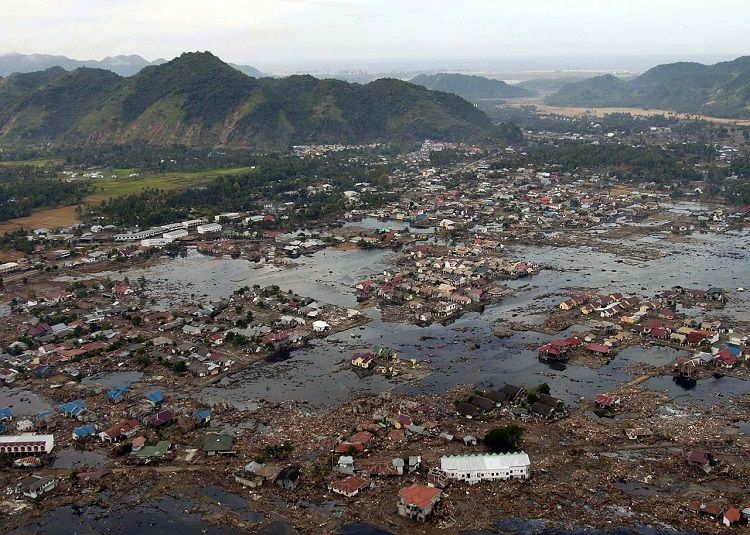How Extinct Undersea Volcanoes Trigger Rare 'Tsunami Earthquakes'

How unusual slow earthquakes can spawn powerful tsunamis is a long-standing mystery that researchers may have finally solved.
Called "tsunami earthquakes," these slow quakes are capable of creating huge waves that can cause serious damage to coastal cities. Tsunami earthquakes are not like typical earthquakes. They happen slowly and don't generate the same kind of violent shaking as typical earthquakes — the tell-tale sign that it's time to evacuate.
Scientists first discovered tsunami earthquakes 35 years ago and they happen so rarely there has been little opportunity to study them since. Now, a new study suggests that tsunami earthquakes happen when two sections of Earth's crust, called tectonic plates, get hung up on extinct volcanoes on the ocean floor, called seamounts. The seamounts act like tread on a tire and make tectonic plates stick. [The 10 Biggest Earthquakes in History]
The research team realized these extinct volcanoes sometimes get squashed in subduction zones. A subduction zone is where one tectonic plate is sliding under the other plate.
The researchers propose that two tsunamis that struck New Zealand in 1947 were caused by tsunami earthquakes that struck in a zone near two sunken volcanoes off the country's northern coast. The earthquake happened when the Pacific tectonic plate slid under the New Zealand tectonic plate, releasing a massive buildup of energy. However, the actual rupture of tsunami earthquakes is slow compared with regular earthquakes. The rupture happens at 335 to 670 mph (539 to 1,078 km/h). In regular earthquakes that rupturing can happen two or three times faster. The slow rupture allows time for huge waves to swell.
Bell and the team estimate the tsunamis might have reached 43 feet (13 meters). Since the New Zealand tsunami earthquake, scientists think there have been nine other tsunami earthquakes. In 1992, a magnitude-7.2 earthquake off the coast of Nicaragua created a wave 26 feet (8 m) tall that killed 170 people. In 2006, an earthquake off the coast of Indonesia with the same magnitude created a wave 23 feet (7 m) tall that drowned 637 people.
Researchers arrived at this conclusion by studying eyewitness accounts from the earthquakes. Witnesses did not report any violent shaking associated with regular earthquakes. Instead they reported feeling the ground "rolling" and feelings of seasickness. After analyzing data originally collected for oil and gas deposit searches, the researchers were able to locate two extinct volcanoes off the coast that likely caused the tsunamis.
Sign up for the Live Science daily newsletter now
Get the world’s most fascinating discoveries delivered straight to your inbox.
By understanding the geologic causes of tsunami earthquakes, scientists hope to pinpoint the areas most at risk for the mysterious slow earthquakes. The scientists hope the new research will help raise awareness among people living in coastal regions who are at risk for tsunami earthquakes.
"These tsunami earthquakes create very little ground shaking, but they shake the ground gently for a long time," lead researcher Rebecca Bell from Imperial College London, told Live Science. "The best warning for residents living close by is that if they feel a very prolonged earthquake, even if the shaking is gentle, they should evacuate to high ground. New tsunami warning signs in New Zealand now use the tag line 'Long, strong, gone'."
Despite a network of seismometers (instruments that measure ground motion, which is then used to measure earthquake size) across the globe that allows geologists to detect very low magnitude underwater quakes, scientists are unsure which quakes have the potential to generate tsunami waves. For now, the researchers think teaching people living in tsunami-risk areas to watch for prolonged shaking will be the most effective way to keep people safe.
The new study was published on May 5 in the journal Earth and Planetary Science Letters.
Follow Kelly Dickerson on Twitter. Follow us @livescience, Facebook & Google+. Original article on Live Science.











